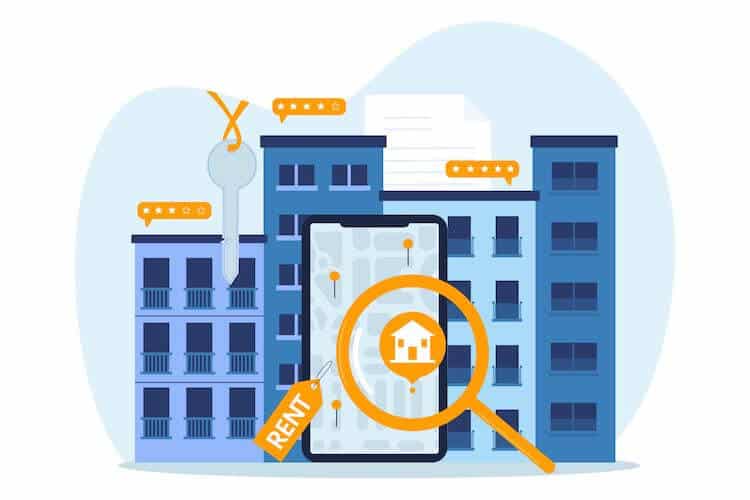Choosing the ability to get a loan online seems quite convenient because it requires less effort and time. However, it can be difficult to select the right option.
There is a wide range of available agencies that are providing this model. Still, the main issue is that not all of them are safe, while there are other potential issues as well, such as additional expenses, hidden costs, and more.
The best approach is to always choose a well-known and reliable option like FriendlyFinance. In this article, we will provide more details about the safety of online loans, and how to choose the right one.
Table of Contents
ToggleEvolution of Online Financial Services

The last decade has witnessed a significant shift in the financial sector towards digital services. This change, driven by technological advancements, has greatly impacted the borrowing landscape.
Traditional banks and new fintech companies now offer services online, providing quick and easy access to funds. This convenience, while beneficial, has raised questions about the safety and reliability of these services.
The transition to digital platforms has meant that more personal and financial information is now stored online, necessitating robust security measures. Despite these measures, concerns about data breaches and identity theft remain prominent. Additionally, the ease of access to these services has led to a rise in impulsive borrowing, potentially leading to financial mismanagement among users.
Security Protocols Are Essential
Digital lending platforms prioritize security to protect user data and transactions. Key security features include encryption, which safeguards data transmission, and secure sockets layer (SSL) certificates, ensuring the authenticity of the website.
Many platforms also implement two-factor authentication, adding an extra layer of security during login processes. However, the effectiveness of these security measures can vary based on the platform’s commitment to safety and the user’s understanding of digital security practices.
Users need to be aware of the potential risks of online transactions, like phishing attacks, and should always verify the legitimacy of the website they are using. Regular software updates and strong, unique passwords are essential practices for maintaining security.
Credibility of Online Lenders

Determining the credibility of an online lender is crucial for a safe borrowing experience. A credible lender will typically be transparent about their fees, interest rates, and loan terms. They should also have a solid track record, which can be assessed through customer reviews and ratings.
Regulatory compliance is another key indicator of a lender’s credibility. Legitimate lenders are registered with and regulated by relevant financial authorities. This ensures they adhere to the laws and standards set to protect consumers. Borrowers should always research and verify a lender’s credentials before engaging in any financial transactions.
Risks of Data Breaches and Online Scams
Despite strong security measures, the risk of data breaches and online scams is ever-present in the digital lending space. Data breaches can lead to sensitive personal and financial information being compromised. Online scams, including phishing and fraudulent lending schemes, pose a significant risk to unsuspecting users.
To mitigate these risks, users should be proactive in protecting their personal information. This includes being cautious about sharing sensitive data, using secure internet connections, and being aware of common online scams. Regular monitoring of bank statements and credit reports can also help in identifying any unauthorized activities early on.
Cybersecurity is Essential
Emerging threats, such as sophisticated phishing schemes and advanced malware, constantly challenge the security protocols of digital lending platforms. Understanding these trends is crucial for both lenders and borrowers. Cybersecurity trends like the increasing use of biometric security, AI-driven threat detection systems, and end-to-end encryption are enhancing the way online lenders protect data.
However, these advancements also mean that cybercriminals are continually adapting their tactics to circumvent these new security measures. For borrowers, staying informed about the latest cybersecurity trends and threats is essential. This knowledge helps in recognizing potential risks and adopting safer online practices.
For instance, being aware of the latest phishing techniques can prevent borrowers from falling victim to such scams.
Regulatory Framework and Consumer Rights
Regulatory frameworks play a pivotal role in ensuring the safety and fairness of online lending services. These frameworks are designed to protect consumers from predatory practices, such as hidden fees or unfair loan terms. Understanding the regulatory environment and consumer rights is vital for anyone considering an online loan.
In many regions, financial regulatory bodies oversee online lenders, ensuring they comply with consumer protection laws.
These regulations typically include requirements for transparent disclosure of loan terms, fair lending practices, and mechanisms for dispute resolution. Borrowers should familiarize themselves with these protections and know where to turn if they face issues with an online lender.
Responsibilities and Best Practices

While online lenders have a responsibility to provide secure and fair services, borrowers also have a role in ensuring their safety. This includes practicing due diligence before accepting a loan, such as reading the terms and conditions thoroughly and understanding the repayment obligations.
Borrowers should also use secure networks when applying for or managing loans online, avoid sharing login credentials, and regularly update their passwords. Being financially literate and understanding one’s capacity to repay a loan is crucial in avoiding debt traps and financial hardships.
Online Loans vs Traditional Banks
Traditional banking loans have long been the standard, with established security protocols and face-to-face interactions adding to their perceived security. However, the digital transformation has brought online loans to the forefront, offering speed and convenience but introducing different security considerations.
The key difference is the method of interaction. Traditional banks often involve in-person meetings and physical documentation, which can offer a sense of security and personalization. Online loans, on the other side, rely on digital communication and electronic document handling, which can be more efficient but may raise concerns about data security.
Summary
Online loans offer convenience and accessibility, but they also come with security risks and responsibilities. Understanding the security measures, assessing lender credibility, being aware of risks, and practicing responsible borrowing are key to a safe online lending experience.
As technology advances, we can expect even more robust security features, making digital borrowing safer and more reliable.



